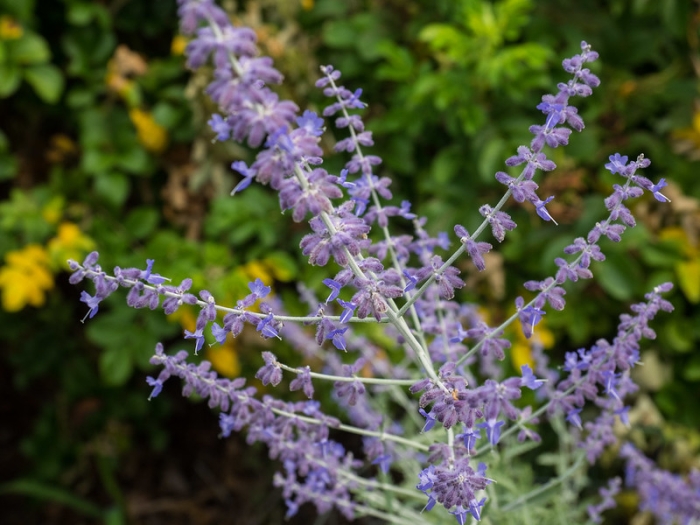Russian Sage
(Perovskia atriplicifolia)
Russian Sage (Perovskia atriplicifolia)
/
/

F. D. Richards
CC BY-SA 2.0
Image By:
F. D. Richards
Recorded By:
Copyright:
CC BY-SA 2.0
Copyright Notice:
Photo by: F. D. Richards | License Type: CC BY-SA 2.0 | License URL: https://creativecommons.org/licenses/by-sa/2.0/ | Uploader: F. D. Richards | Publisher: Flickr |






























































Estimated Native Range
Summary
Perovskia atriplicifolia, commonly known as Russian Sage, is a deciduous perennial herb native to steppes and hillsides in Central Asia, particularly in regions with a dry climate. It typically grows to a height of 0.6–1.2 meters (2–4 feet) and spreads 0.6–1.2 meters across, with an erect to spreading habit that resembles a larger version of lavender. The plant’s rigid stems are covered with wiry hairs, giving them a silvery appearance, and it produces small, tubular blue to purple flowers from mid-summer to autumn, which are highly attractive to pollinators and provide a long-lasting display of color.
Russian Sage is valued for its drought tolerance, thanks to its deep-feeding taproot, and its ability to thrive in a range of soil types, from sandy and chalky to loamy or heavy clay, provided there is good drainage. It is also salt-tolerant, making it suitable for coastal gardens. The plant’s preference for full sun and tolerance of both heat and cold make it versatile for cultivation in USDA hardiness zones 3 through 9. Russian Sage is commonly used for its ornamental qualities, serving as an accent feature in borders, xeriscaping, and as a mass planting for a splash of color. However, it can be potentially invasive outside its native range, so gardeners should check local guidelines before planting.CC BY-SA 4.0
Russian Sage is valued for its drought tolerance, thanks to its deep-feeding taproot, and its ability to thrive in a range of soil types, from sandy and chalky to loamy or heavy clay, provided there is good drainage. It is also salt-tolerant, making it suitable for coastal gardens. The plant’s preference for full sun and tolerance of both heat and cold make it versatile for cultivation in USDA hardiness zones 3 through 9. Russian Sage is commonly used for its ornamental qualities, serving as an accent feature in borders, xeriscaping, and as a mass planting for a splash of color. However, it can be potentially invasive outside its native range, so gardeners should check local guidelines before planting.CC BY-SA 4.0
Plant Description
- Plant Type: Herb, Subshrub
- Height: 3-5 feet
- Width: 2-4 feet
- Growth Rate: Moderate
- Flower Color: Blue, Purple
- Flowering Season: Summer, Fall
- Leaf Retention: Deciduous
Growth Requirements
- Sun: Full Sun
- Water: Low
- Drainage: Fast, Medium
Common Uses
Bee Garden, Bird Garden, Border Plant, Butterfly Garden, Deer Resistant, Drought Tolerant, Erosion Control, Fire Resistant, Fragrant, Hummingbird Garden, Low Maintenance, Potted Plant, Rabbit Resistant, Salt Tolerant, Showy Flowers, Street Planting
Natural Habitat
Steppes and hillsides in Central Asia, with blue to purple flowers from mid-summer to autumn
Other Names
Common Names: Russian-Sage , Silber-Perowskie , Afghanperovskia
Scientific Names: Perovskia atriplicifolia , Salvia yangii , Perovskia pamirica
GBIF Accepted Name: Perovskia atriplicifolia Benth.